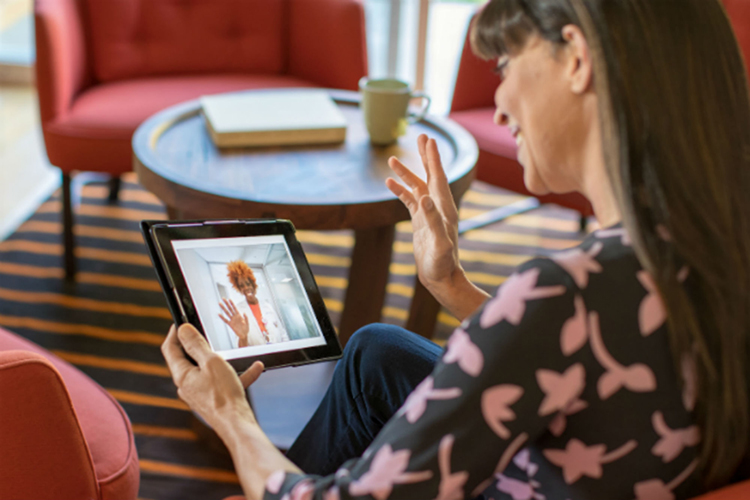Kaiser Permanente's report in NEJM AI details insights from a large-scale rollout of ambient AI clinical documentation technology.

Patients find video visits convenient, high-quality
Study: 9 in 10 members who tried video visits would do it again
By Janet Byron
Senior Communications Consultant
Nine out of 10 Kaiser Permanente members who had a primary-care video visit were confident in the quality of care received, reported that the provider was familiar with their medical history, and felt that their health care needs were adequately addressed.

In a research brief, “Patient–Provider Video Telemedicine Integrated With Clinical Care: Patient Experiences,” published this week in Annals of Internal Medicine, Kaiser Permanente researchers report on a survey of 1,274 patients in Kaiser Permanente’s Northern California Region who scheduled video visits during the last quarter of 2015, a few months after the option became available to patients and providers across the region.
“We believe this is the first large study of patient experiences integrating video visits into primary care with existing providers,” said Mary Reed, DrPH, research scientist at the Kaiser Permanente Northern California Division of Research.
“Patients like this channel”
“This is unique because while various other consumer telemedicine services offer the opportunity to go online and talk to a doctor, usually that doctor is not the same one that they have been seeing in person, nor does the doctor have full access to their whole medical record.”
Four out of 5 Kaiser Permanente members asked to participate in the survey shared their views about video visits. Among the study’s findings:
- 92 percent said the video visit provider was familiar with their medical history.
- 89 percent were interested in a future video visit.
- 87 percent said the video visit was more convenient than other ways of getting care.
- 84 percent said the video visit improved their relationship with their doctor.

Likewise, video visits reduced office visits for 35 percent of members who would have otherwise needed to make other arrangements for in-person visits, and reduce office visits for 25 percent of members those who wouldn’t need to make such arrangements.
“For physicians, it’s good for us to have an awareness that patients like this channel, that this is something they appreciate,” said co-author and Permanente pediatrician Rahul Parikh, MD, a leader in The Permanente Medical Group (TPMG) Technology Group. “Now we have data to support the value in video visits.”
Use of telemedicine increasing steadily
Kaiser Permanente offers members a comprehensive set of telemedicine options, including phone, secure email message, and video. Although video visits still account for a small proportion of overall patient primary-care visits, the numbers are steadily increasing, Reed said.
“Members seem to be saying, ‘I use FaceTime with my daughter or video-conference at work, so I can do a video visit with my doctor.”
The study was supported by a Delivery Science Research Grant from the Kaiser Permanente Division of Research. In addition to Reed and Dr. Parikh, co-authors were Jie Huang, PhD, and Andrea Millman, MA, of the Division of Research; and Dustin Ballard, MD, MBE, Irwin Barr, MD, and Craig Wargon, DPM, of TPMG.
Janet Byron is a senior communications consultant with the Kaiser Permanente Division of Research. This was originally published on the Division of Research site.


